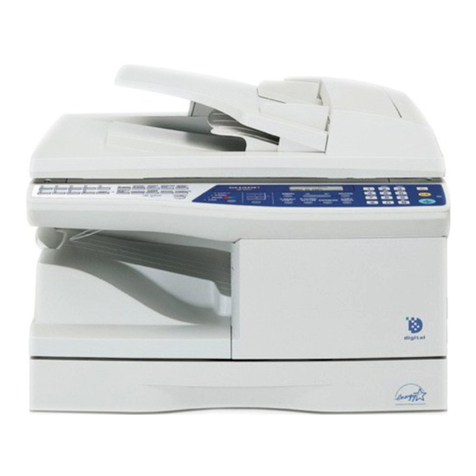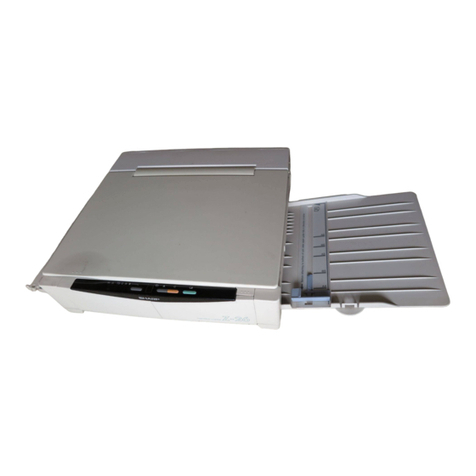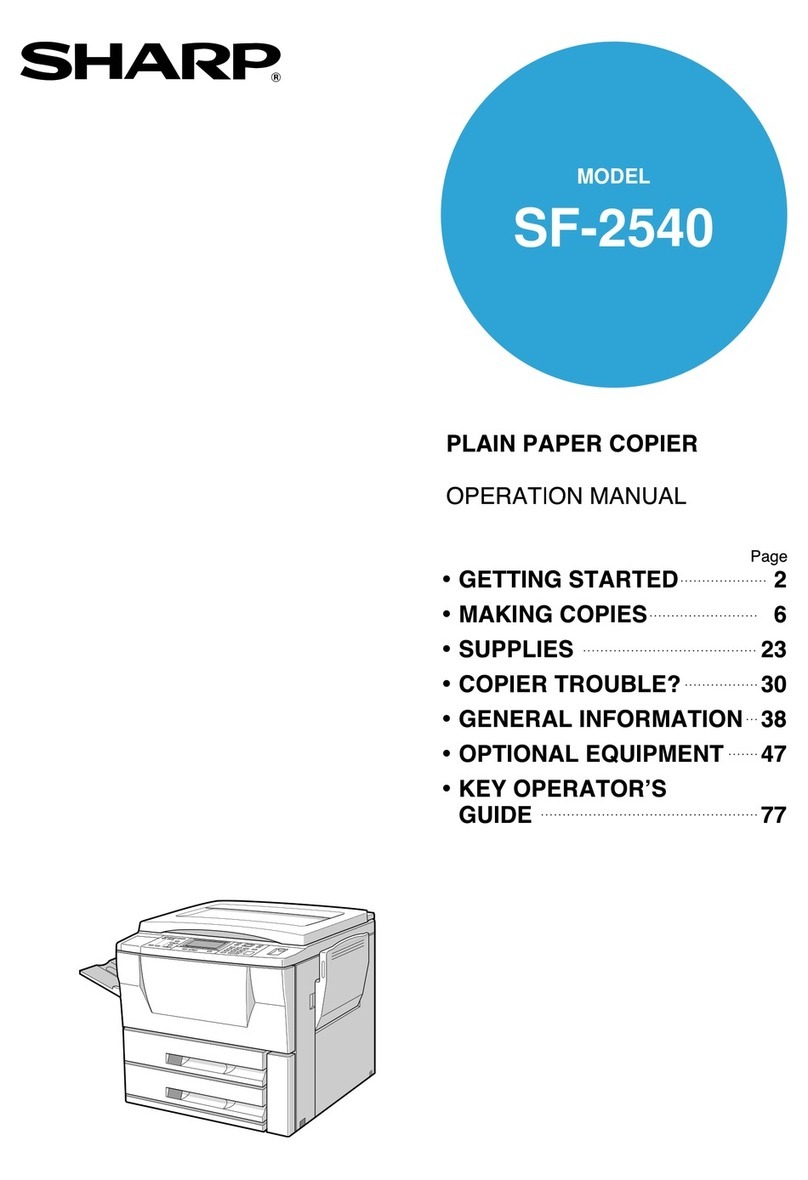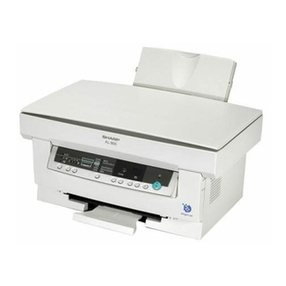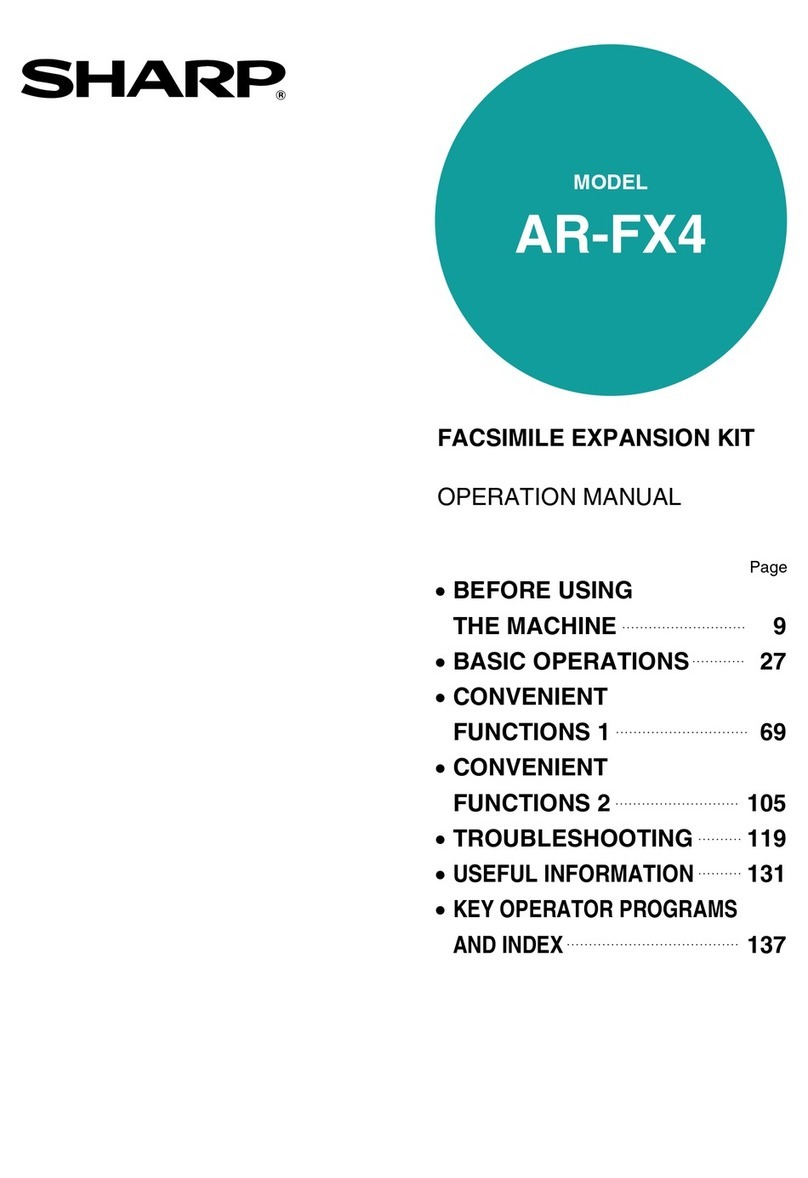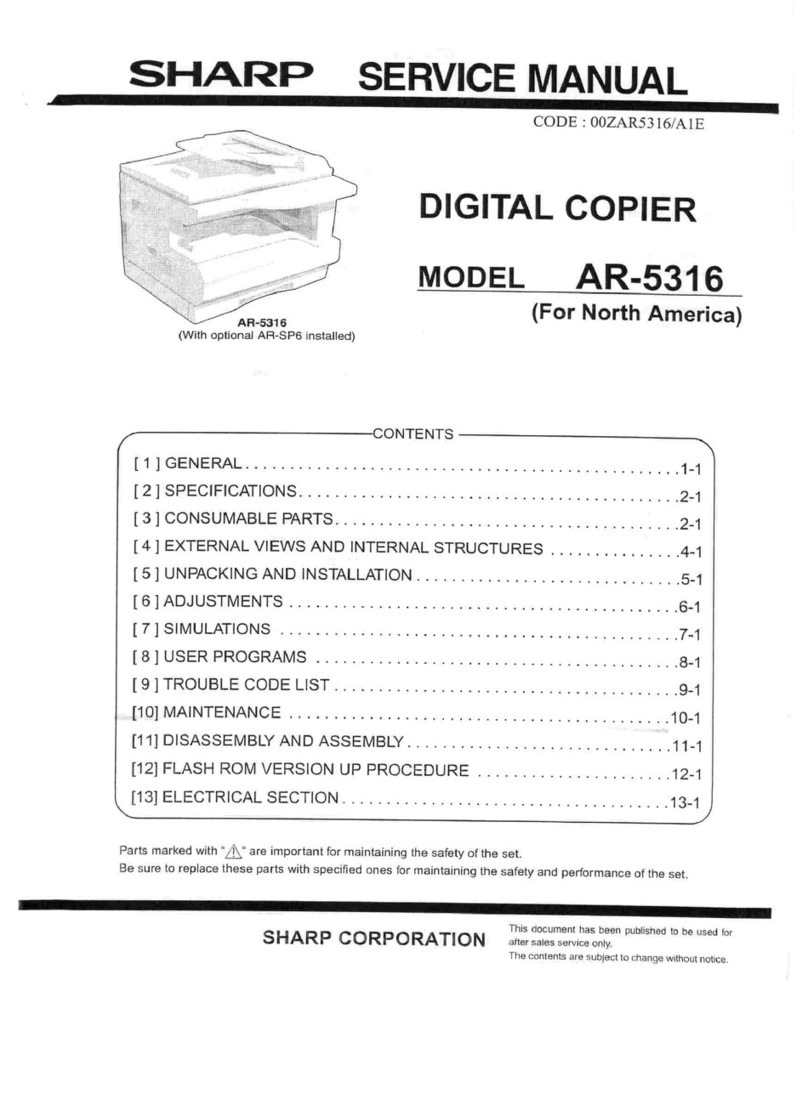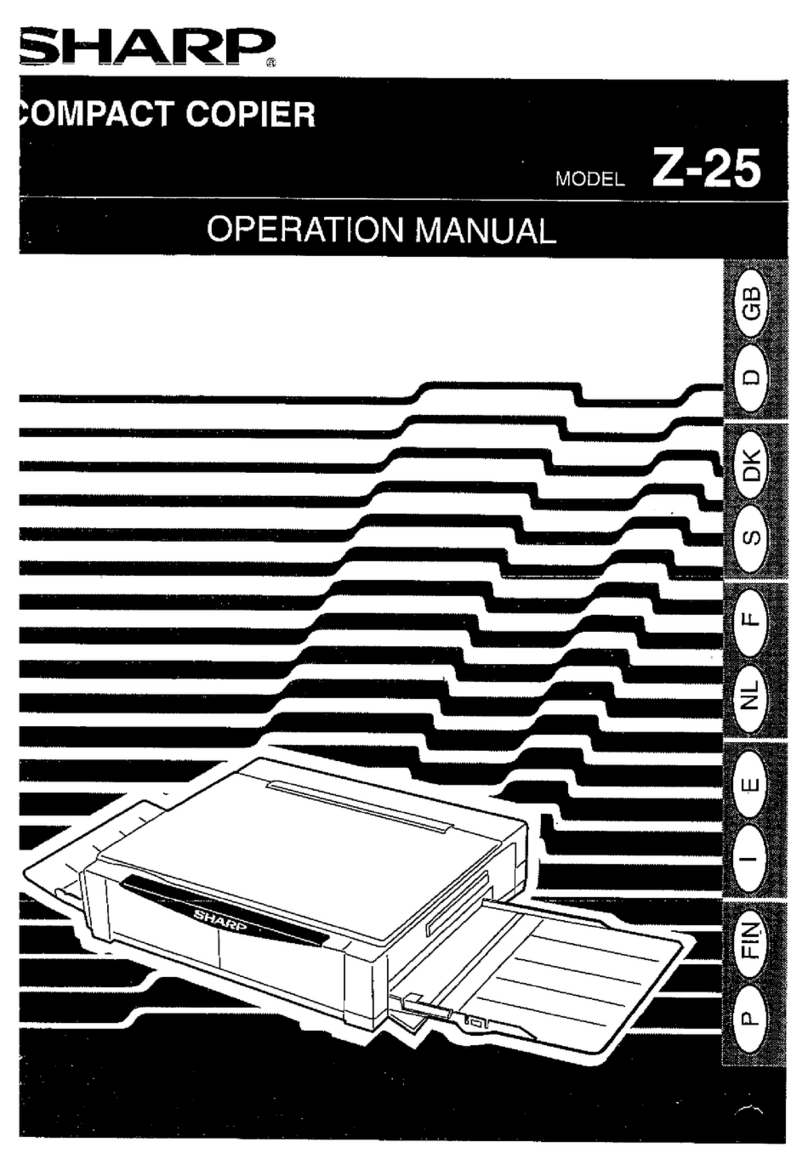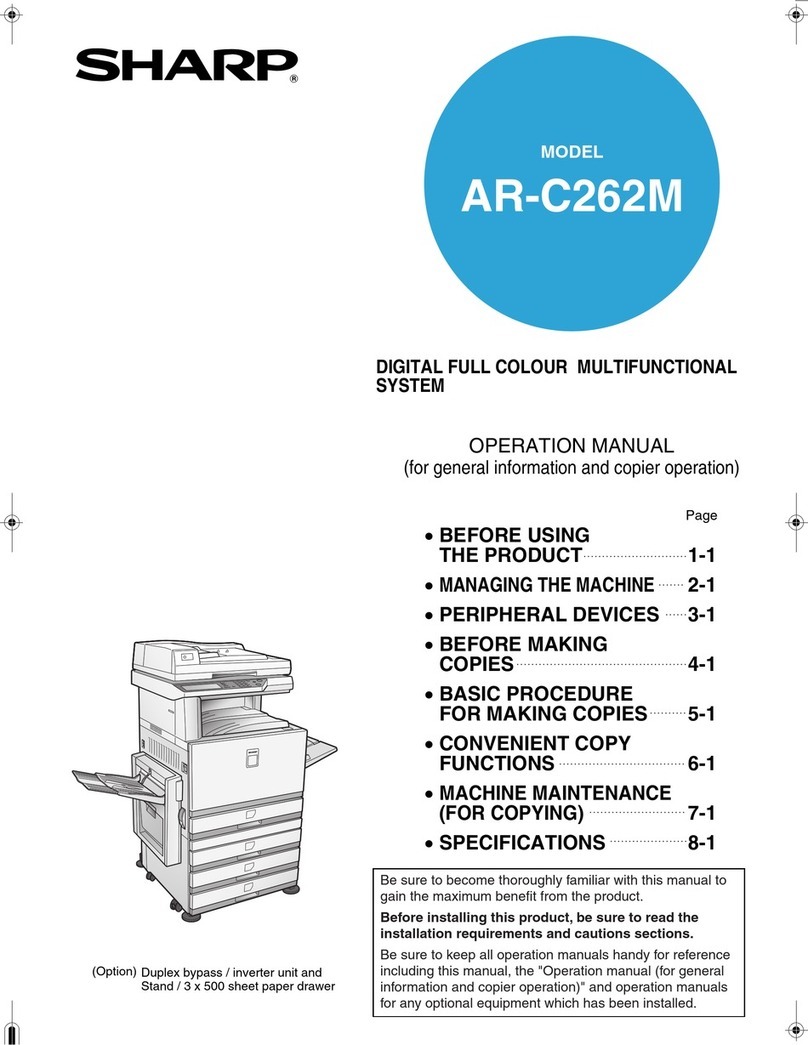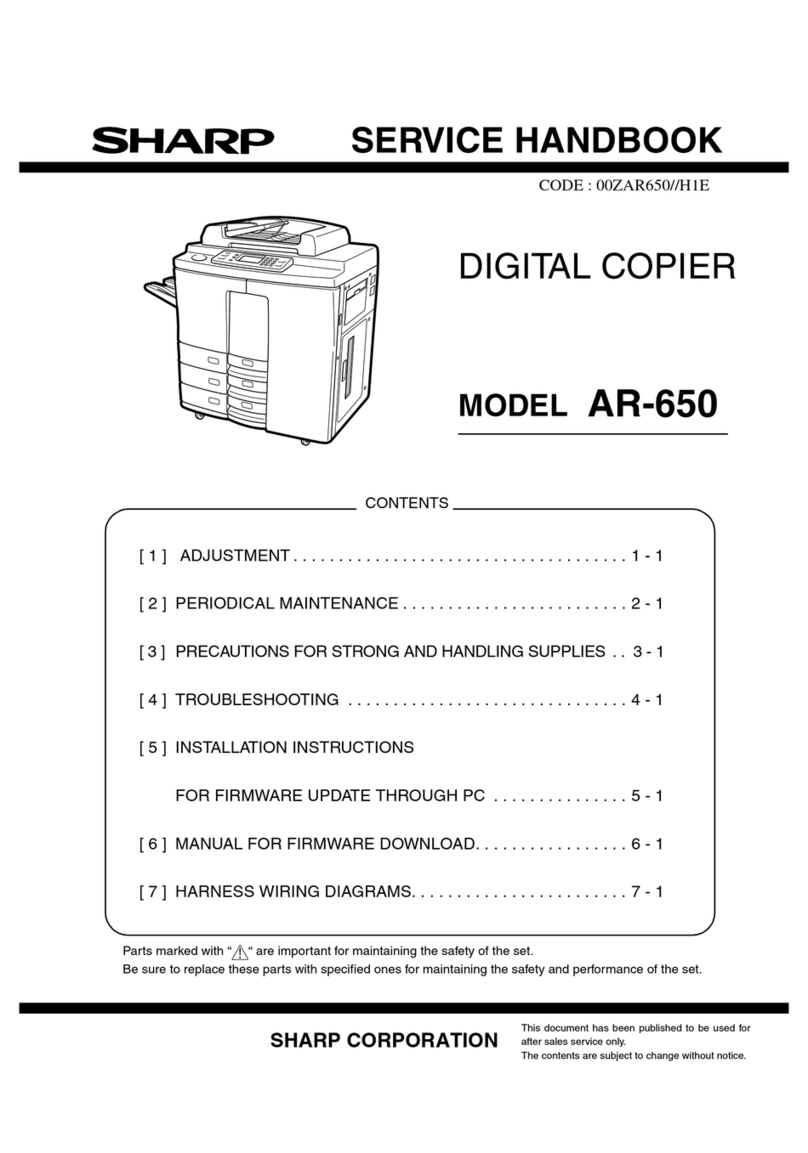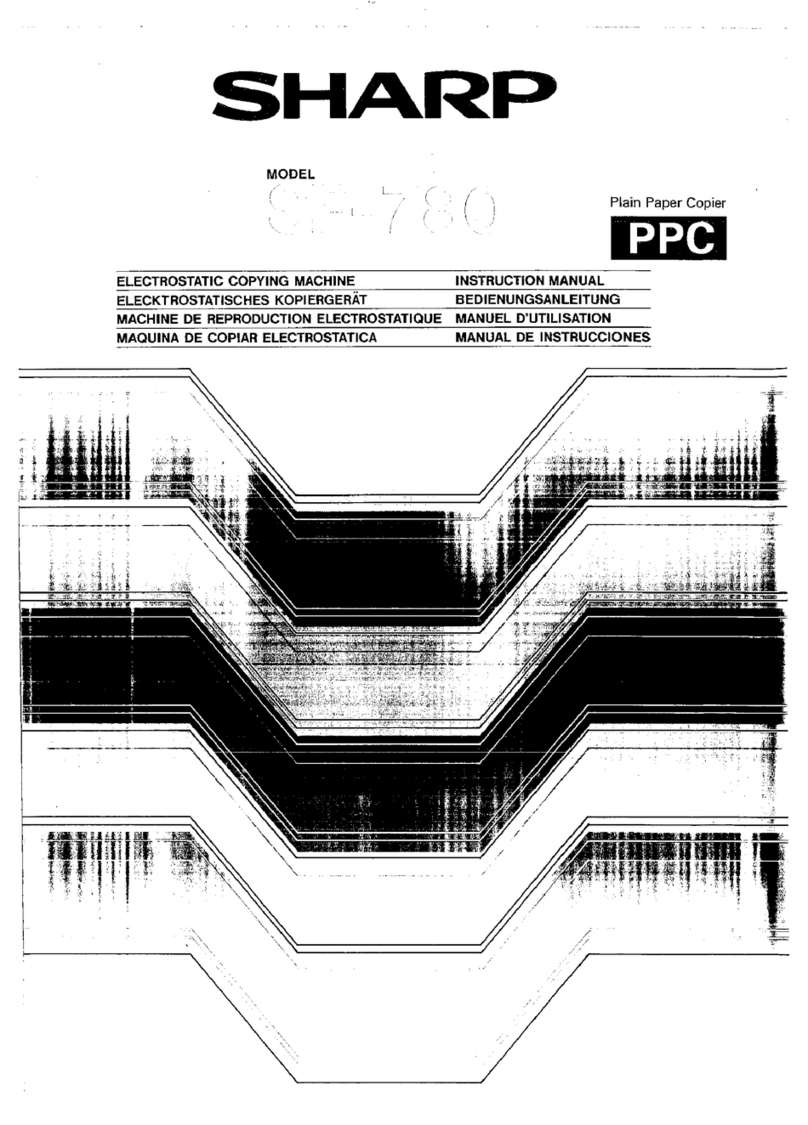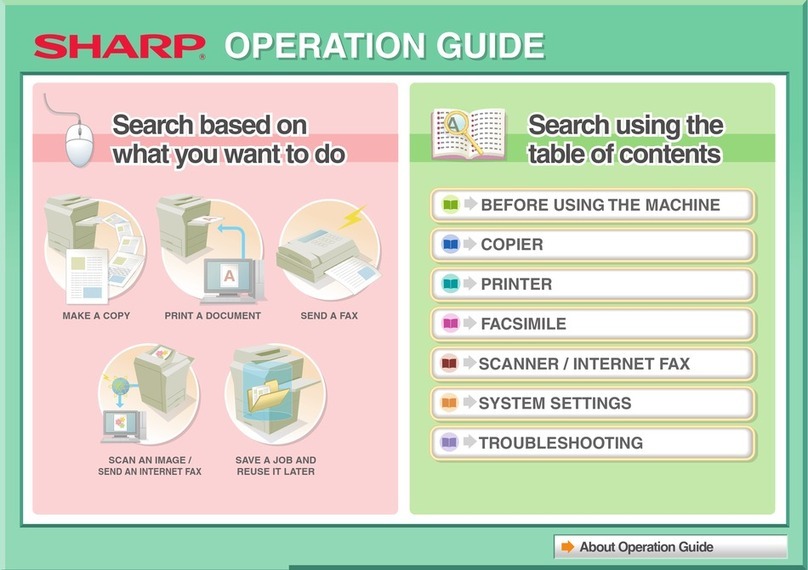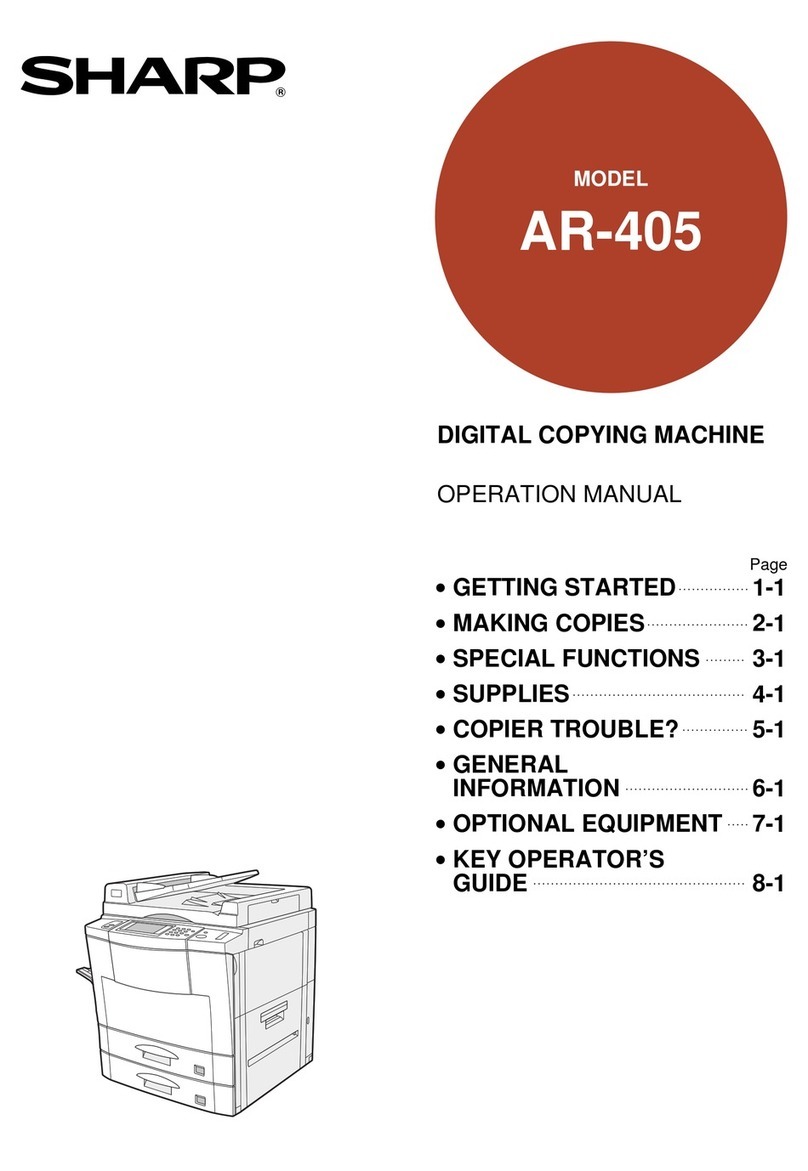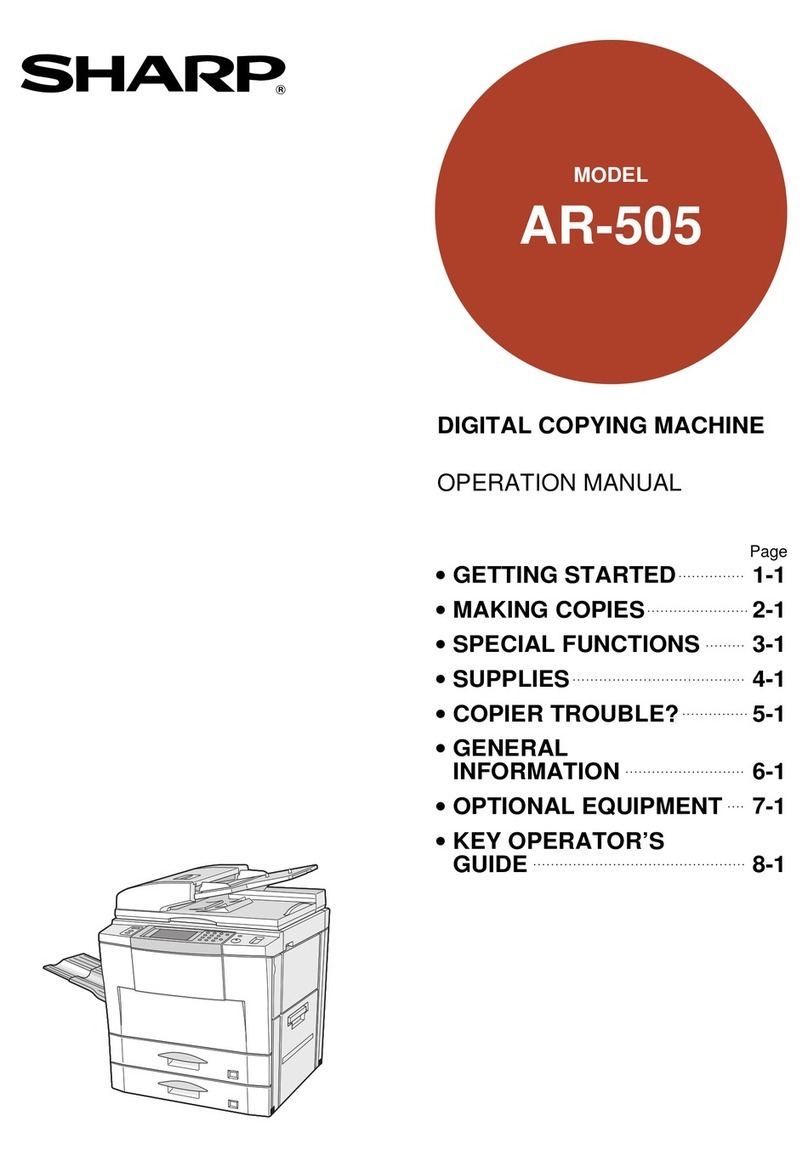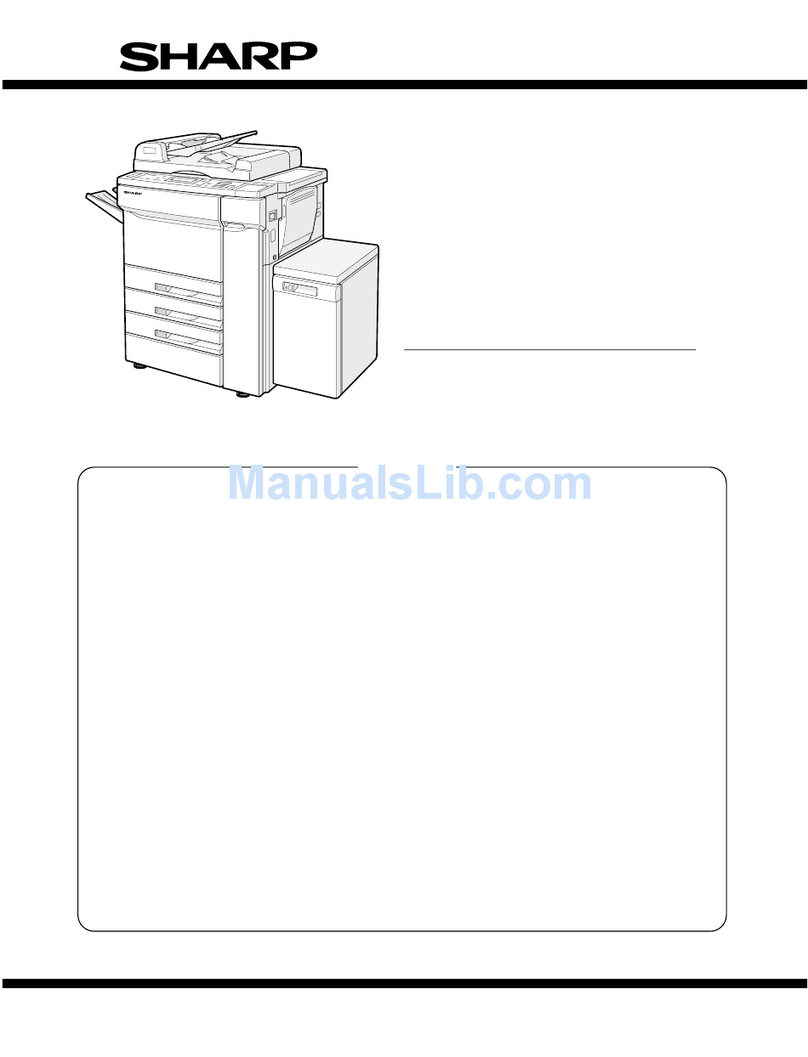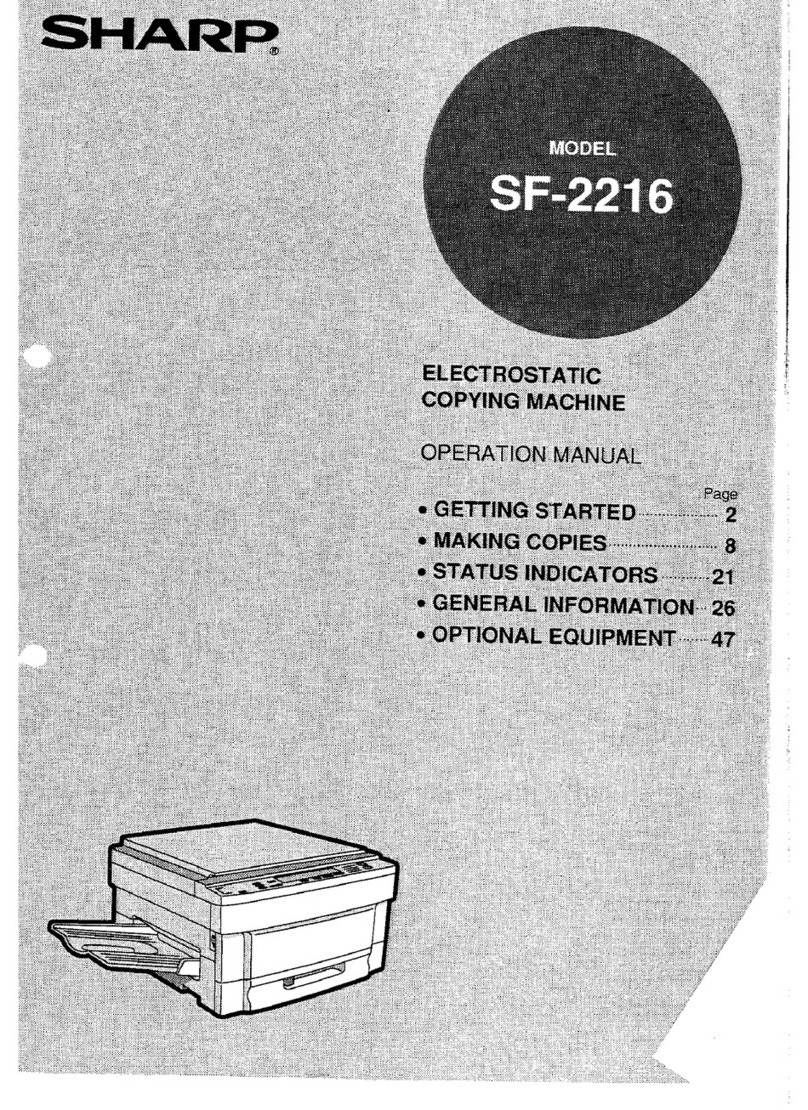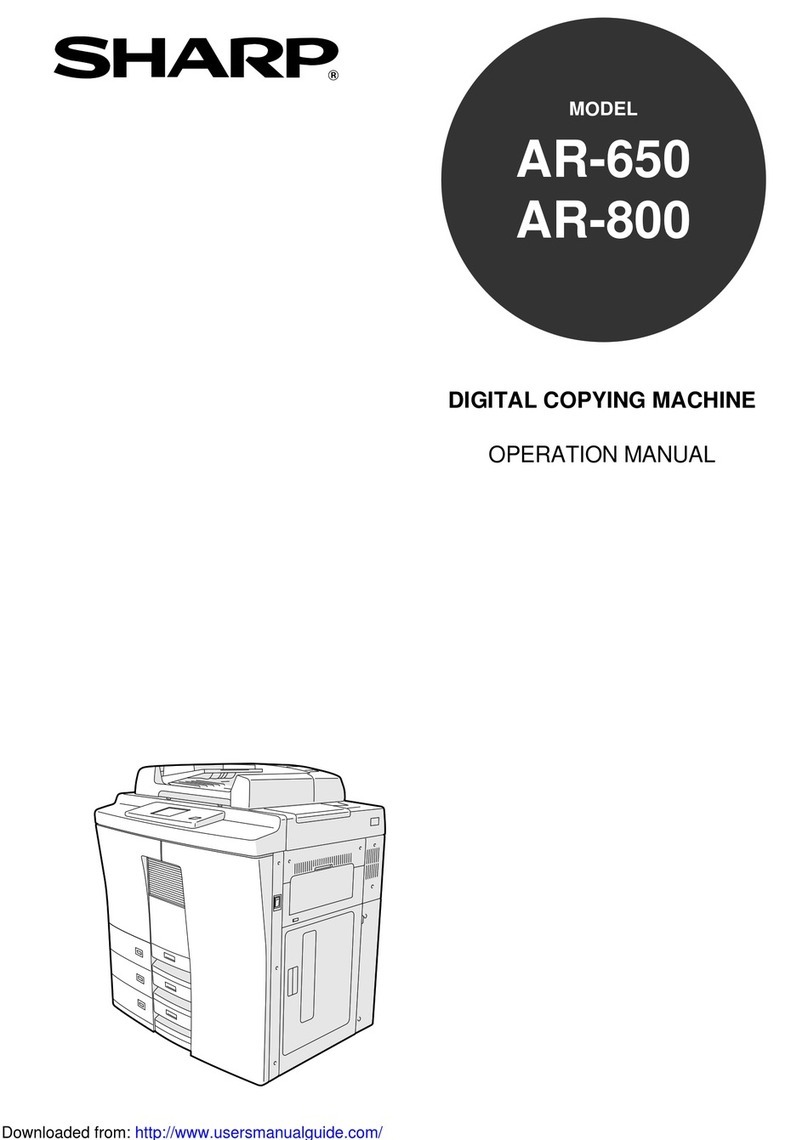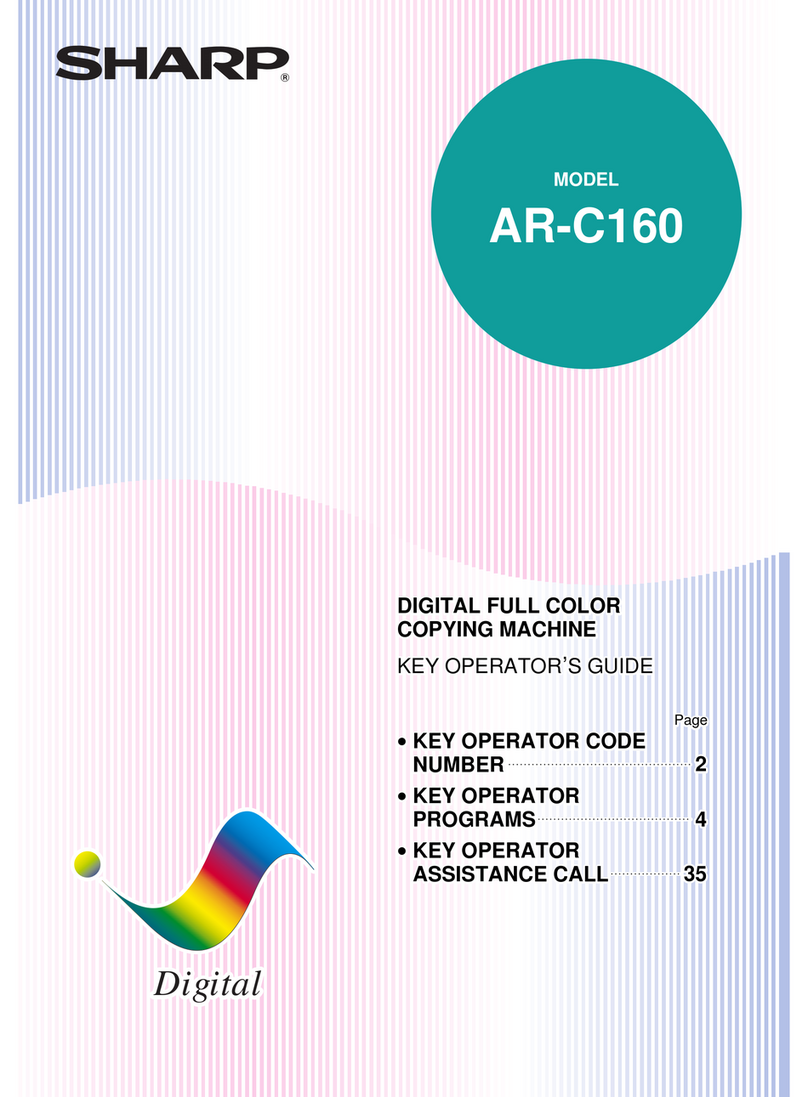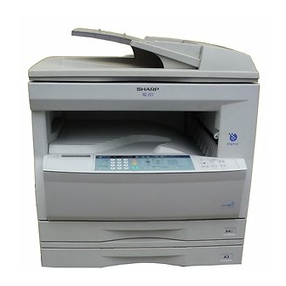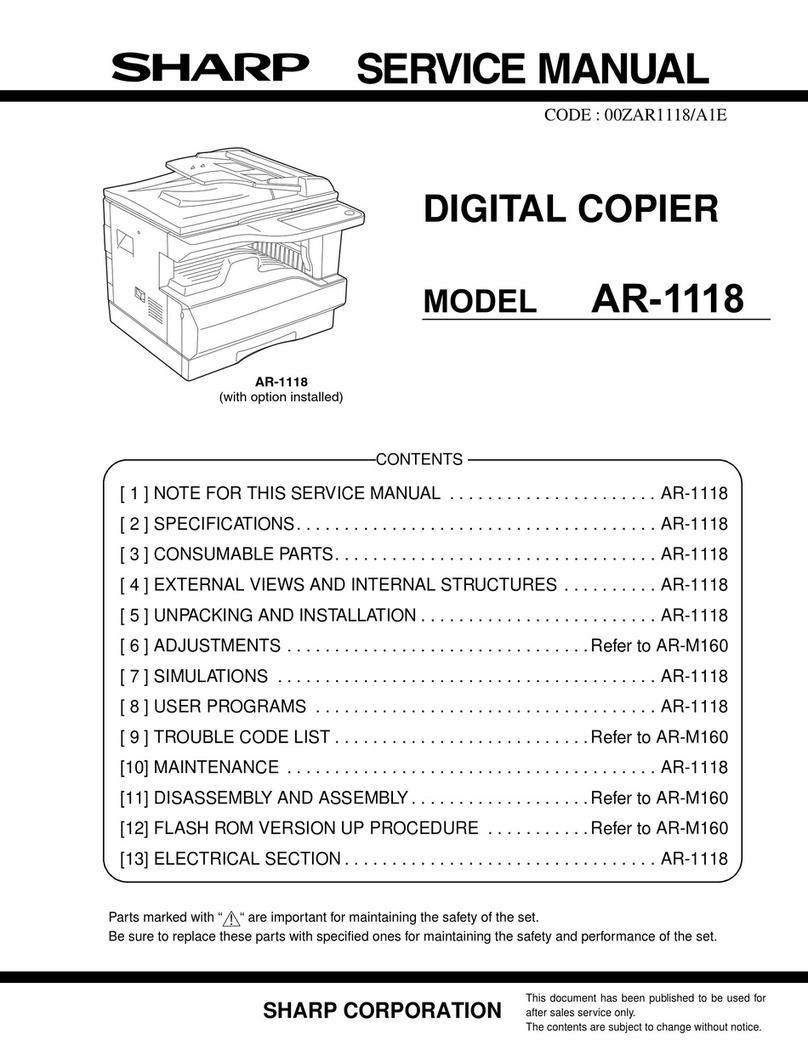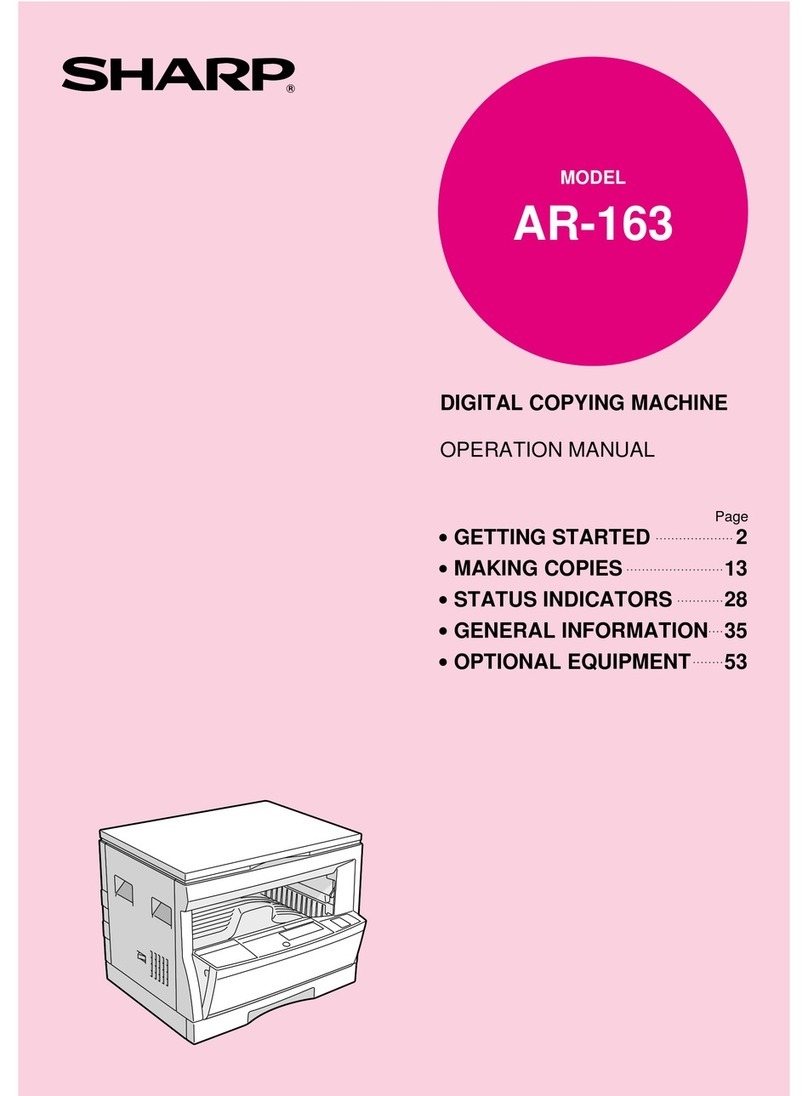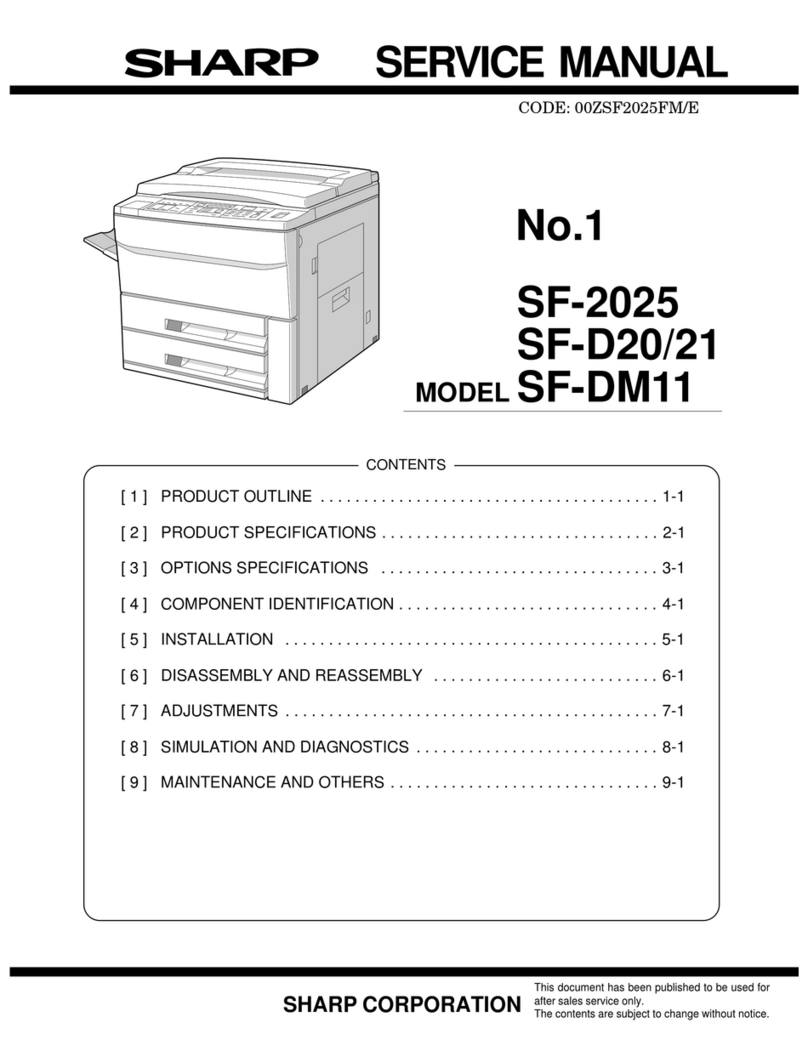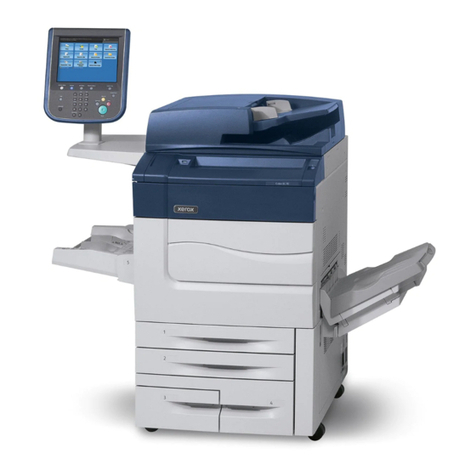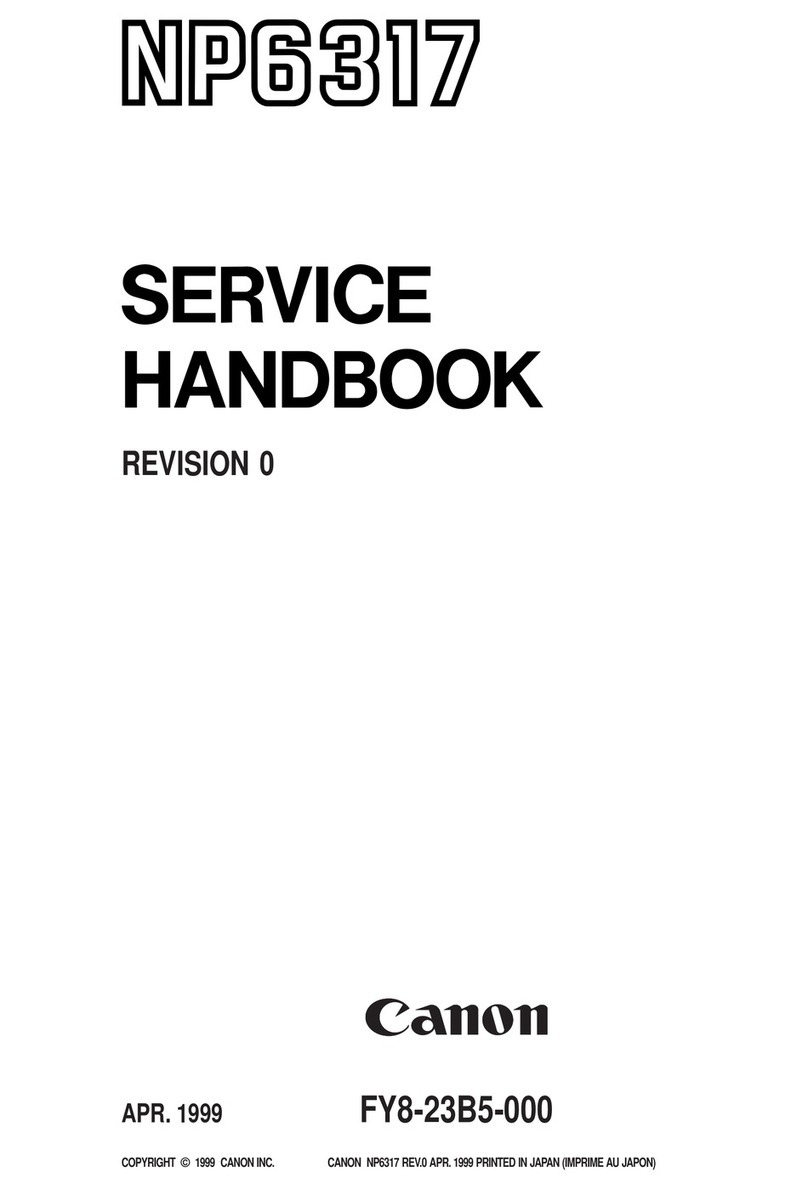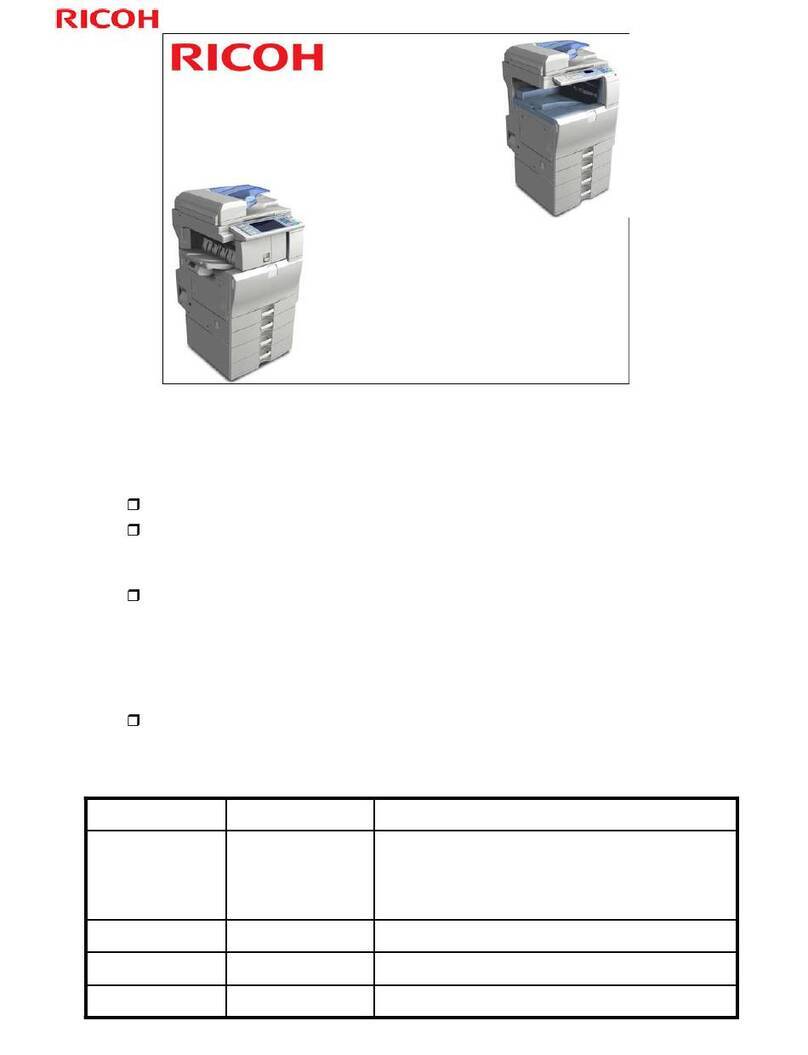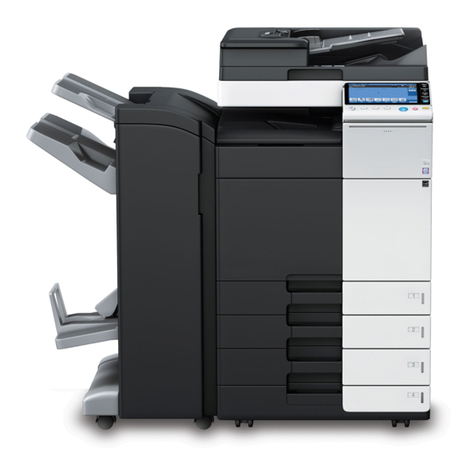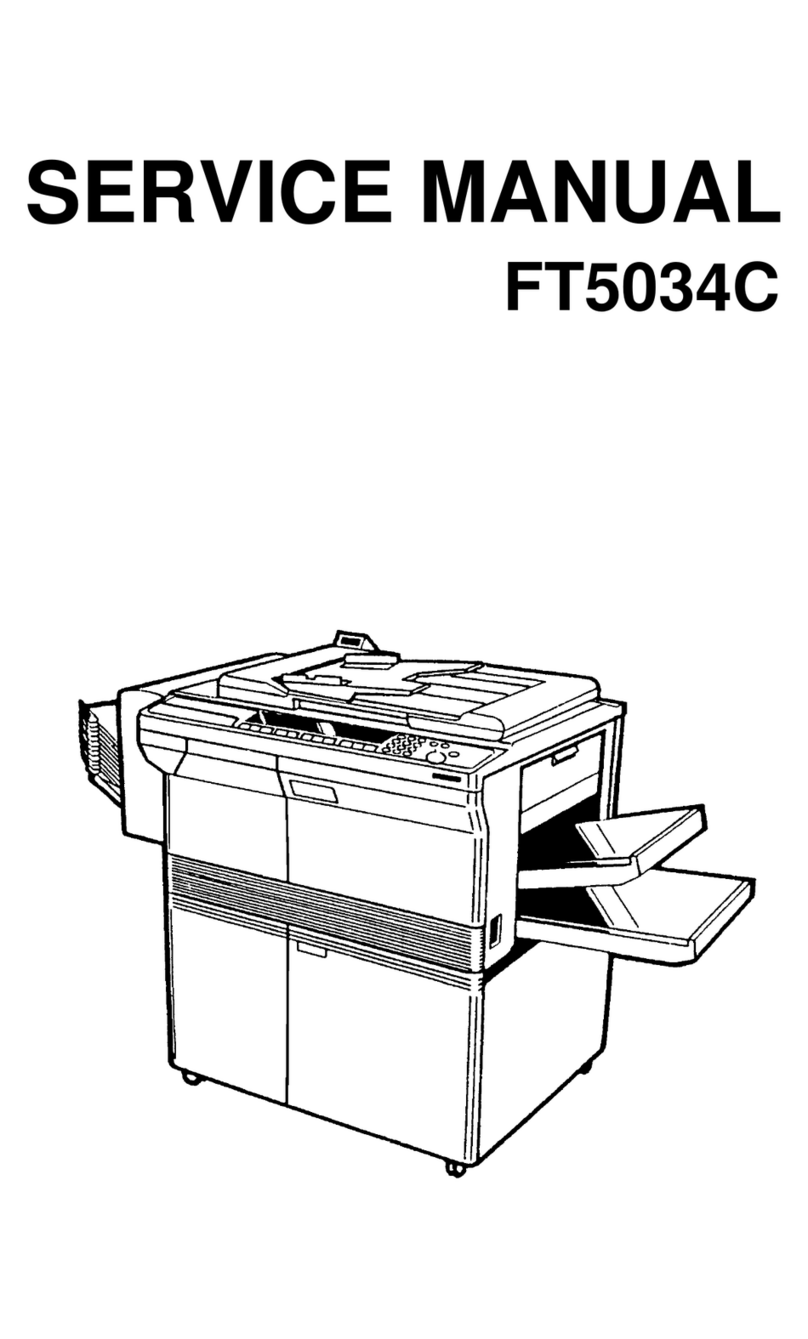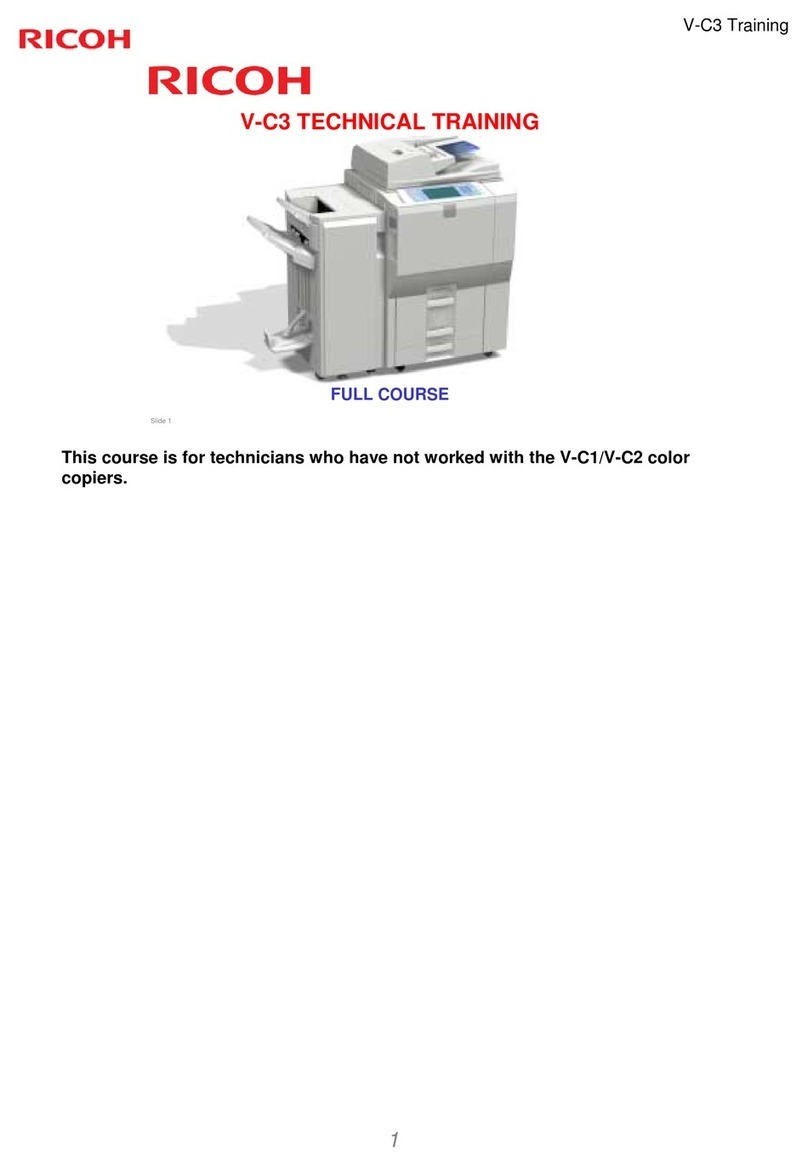
(1) Basic operations of copying
1Image data are scanned in the scanner section and sent to the
image process (ICU) PWB.
2The data are converted into printable data in the circuit of the
image process (ICU) PWB.
3The data are printed in the printer section.
3. Scanner section
(1) How to scan an document
The scanner is provided with sensors which are arranged on one line.
These sensors scan a horizontal line of an document at a time and
the data are outputted sequentially. After completion of the line, the
next line is scanned. The operation is repeated until one page is
completed. The figure below shows that the images scanned by the
sensors are sent to the ICU PWB sequentially.
The direction of the lines is called the "main scanning direction" and
the direction of scanning the "sub scanning direction."
The above figure shows four elements in one line. Actually, however,
there are thousands of elements in one line. The light receiving ele-
ments called CCD are used.
The resolution is an index value to express the capacity of scanners.
The resolution shows how many light receiving elements are used in
one inch (dpi, dot per inch).
While the sub scanning direction is used to control the motor which
drives the optical system and to adjust the resolution to take in the
images.
(2) Basic structure of the scanner section
The scanner unit is the scanning section of the digital optical system.
The light from the halogen lamp (which is driven by the DC power to
suppress ripples) is reflected by the document and passed through
three mirrors and the reduction lens to form images on the CCD
elements (image sensors). This system is called the reduction type
image sensor system. The light image (photo energy) formed on the
CCD elements are converted into electrical signals (analog signals)
by the CCD elements (Photo conversion).The output signals (analog
signals) are converted into digital signals (A/D conversion) to perform
various image processes. The resolution at that time is 400dpi.
4. Laser unit
The image data sent from the ICU (image process PWB) are passed
to the LSU (laser unit) and converted into laser beams.
(1) Basic structure
The LSU unit is the writing section of the digital optical system. The
semiconductor laser is used as the light source. Images are formed
by the polygon mirror and the fθlens on the OPC drum.
The internal structure is shown in the figure on the next page. The
image data from the ICU are converted into DUTY signals for every
gradations (256 steps), and the semiconductor laser on the laser
emitting PWB is turned on/off according to the DUTY. The laser
beams are passed through the collimator lens, the slit, the cylindrical
lens, the polygon mirror, the fθlens, and the mirror to form images in
the shaft direction (main scanning direction) of the OPC drum. The
laser emitting PWB is provided with the APC (Auto Power Control) to
eliminate fluctuations in the laser power. The BD PWB serves to
measure the writing point for the laser.
(2) Composition
Effective scanning width: 302 mm
Resolution: 400 dpi
Beam diameter: main scanning 75 µm, sub scanning 90 µm
Image surface power: 0.3mW ∼0.6mW
Polygon motor: Brushless DC motor
No. of mirrors →6
1
2
3
4
5
5432
1
Sub scanning direction
Sensor scanning area
Main
scanning
direction
Original
Image data sent to the ICU PWB
To ICU PWB
1 – 2
